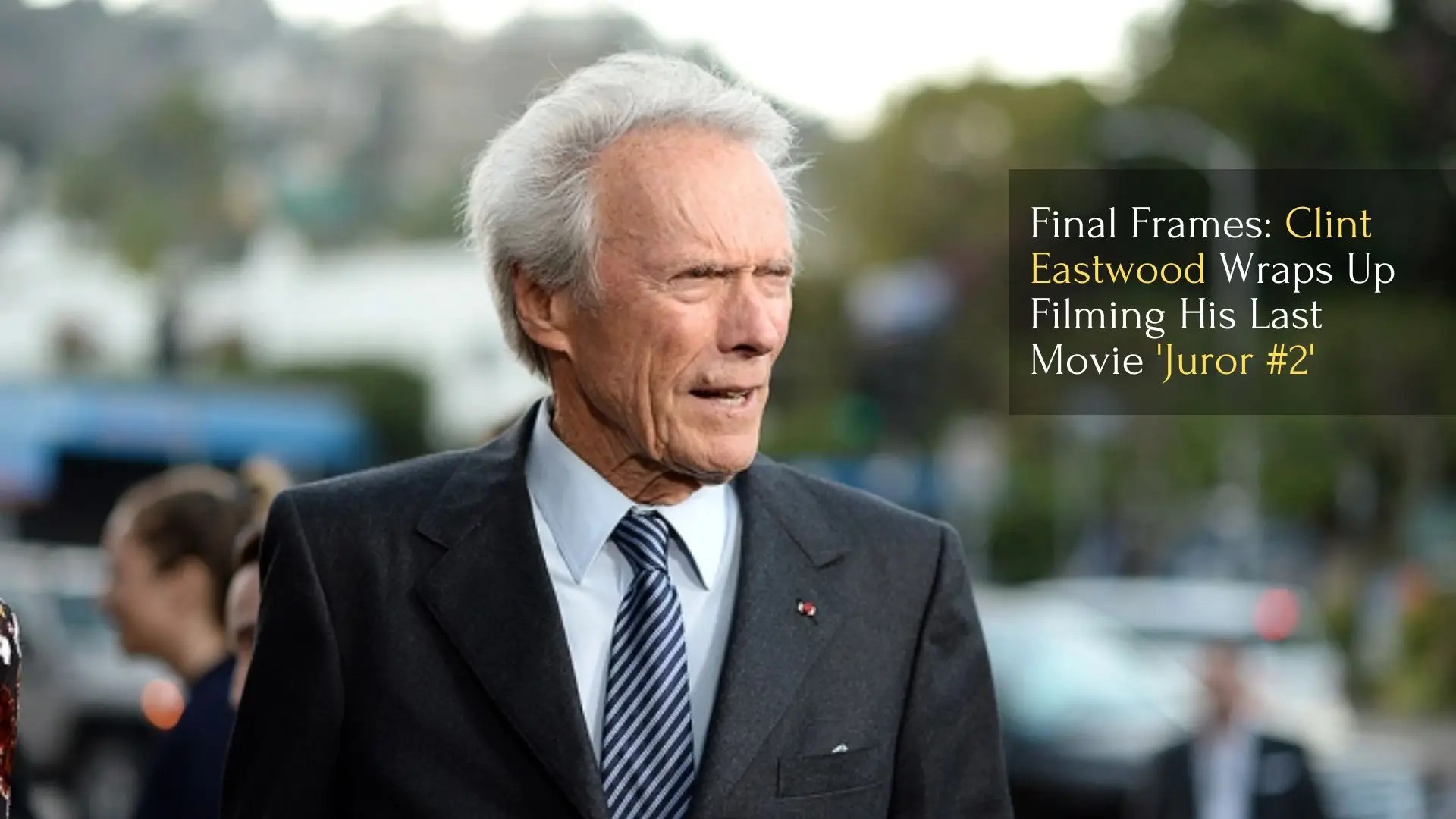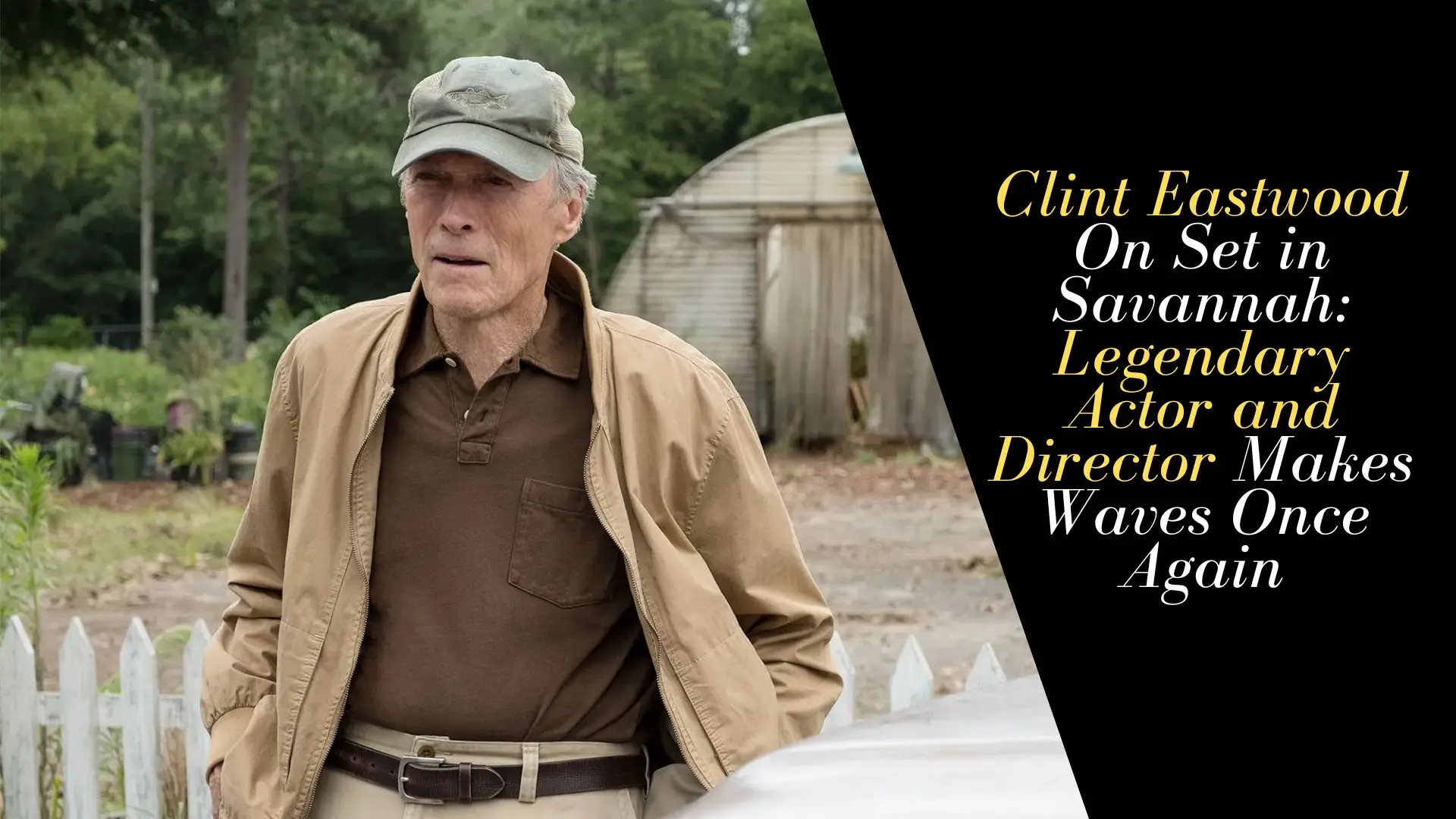Clint Eastwood Filming: A Deep Dive Into The Legendary Director's Craft
Clint Eastwood filming has always been a topic of fascination for cinephiles and aspiring filmmakers alike. Known for his minimalist yet impactful approach, Eastwood’s style behind the camera has set him apart in the world of cinema. From his early days as an actor to becoming one of Hollywood's most celebrated directors, his journey is a testament to his unparalleled dedication to storytelling. Whether you’re a fan of his Westerns or his more recent dramas, understanding his filming techniques offers valuable insights into the art of moviemaking.
Eastwood’s filmmaking process is unique, blending efficiency with a deep respect for storytelling. Unlike many directors who spend months planning every detail, Eastwood is known for his spontaneous and intuitive approach. His ability to capture raw emotions and authentic performances has earned him critical acclaim and a loyal fanbase. With a career spanning over six decades, Eastwood has not only influenced generations of filmmakers but also redefined what it means to be a true auteur.
So, what makes Clint Eastwood’s filming style so iconic? Is it his preference for natural lighting, his insistence on minimal takes, or his ability to bring out the best in his actors? In this article, we’ll explore the intricacies of his filmmaking process, delve into his biography, and answer some of the most frequently asked questions about his work. Whether you’re a fan or a budding filmmaker, this guide will provide you with a comprehensive look at the man behind the camera.
Read also:Adriana Lima Valentina Unveiling The Life And Legacy Of A Global Icon
Table of Contents
- Biography: The Man Behind the Camera
- Personal Details and Bio Data
- Why Clint Eastwood Filming Stands Out?
- How Does Clint Eastwood Approach Filming?
- Key Techniques in Clint Eastwood Filming
- What Can Aspiring Filmmakers Learn from Clint Eastwood?
- Most Iconic Clint Eastwood Filming Moments
- Is Clint Eastwood Filming Still Relevant Today?
- How Has Clint Eastwood Influenced Modern Cinema?
- Frequently Asked Questions About Clint Eastwood Filming
Biography: The Man Behind the Camera
Clint Eastwood is more than just a Hollywood legend; he is a symbol of resilience, creativity, and innovation. Born on May 31, 1930, in San Francisco, California, Eastwood grew up during the Great Depression, an era that shaped his work ethic and worldview. His journey from a struggling actor to an Academy Award-winning director is nothing short of inspiring.
Eastwood first gained fame in the 1950s as Rowdy Yates in the TV series *Rawhide*. However, it was his role as the "Man with No Name" in Sergio Leone’s *Dollars Trilogy* that cemented his status as a cultural icon. Over the years, Eastwood transitioned from acting to directing, helming critically acclaimed films like *Unforgiven*, *Million Dollar Baby*, and *Gran Torino*. His ability to balance commercial success with artistic integrity has made him a revered figure in the film industry.
Personal Details and Bio Data
| Full Name | Clinton Eastwood Jr. |
|---|---|
| Date of Birth | May 31, 1930 |
| Place of Birth | San Francisco, California, USA |
| Occupation | Actor, Director, Producer, Composer |
| Years Active | 1955–Present |
| Notable Works | Unforgiven, Million Dollar Baby, Gran Torino, The Good, the Bad and the Ugly |
| Awards | 5 Academy Awards, 4 Golden Globe Awards, 2 BAFTA Awards |
Why Clint Eastwood Filming Stands Out?
What is it about Clint Eastwood’s approach to filmmaking that makes it so distinctive? Unlike many directors who rely heavily on pre-production planning, Eastwood prefers a more organic process. He believes in capturing the essence of a scene in the moment, which often leads to more authentic performances. This spontaneity is one of the reasons why his films resonate so deeply with audiences.
Another hallmark of Clint Eastwood filming is his emphasis on simplicity. He avoids overcomplicating scenes with unnecessary special effects or elaborate setups. Instead, he focuses on storytelling, allowing the narrative to drive the film. This approach has earned him a reputation as one of the most efficient and effective directors in Hollywood.
How Does Clint Eastwood Approach Filming?
Clint Eastwood’s approach to filming is both unconventional and highly effective. One of his most famous techniques is the use of minimal takes. While many directors shoot dozens of takes to perfect a scene, Eastwood often captures the desired performance in just a few attempts. This not only saves time but also keeps the actors fresh and engaged.
Another key aspect of Clint Eastwood filming is his preference for natural lighting. He believes that artificial lighting can sometimes detract from the authenticity of a scene. By using natural light, he creates a more immersive and realistic experience for the audience.
Read also:Discovering The Allure Of Model Jill Tavelman A Journey Through Her Life And Career
Key Techniques in Clint Eastwood Filming
Clint Eastwood’s filming techniques have been studied and emulated by filmmakers around the world. Here are some of the key elements that define his style:
- Minimal Takes: Eastwood values efficiency and trusts his actors to deliver their best performance quickly.
- Natural Lighting: He avoids excessive use of artificial lighting to maintain a realistic aesthetic.
- Spontaneity: Eastwood often makes creative decisions on the spot, allowing the story to evolve organically.
- Focus on Storytelling: His films prioritize narrative over spectacle, ensuring that the story remains the central focus.
What Can Aspiring Filmmakers Learn from Clint Eastwood?
For aspiring filmmakers, Clint Eastwood’s approach to filmmaking offers several valuable lessons. First and foremost, his emphasis on storytelling serves as a reminder that a compelling narrative is the backbone of any great film. Additionally, his use of minimal takes and natural lighting demonstrates the importance of efficiency and authenticity in filmmaking.
Another lesson from Clint Eastwood filming is the value of collaboration. Eastwood is known for fostering a supportive environment on set, which allows actors and crew members to perform at their best. By prioritizing teamwork and mutual respect, he creates an atmosphere conducive to creativity and innovation.
Most Iconic Clint Eastwood Filming Moments
Over the years, Clint Eastwood has delivered countless memorable moments on screen. From the tense showdowns in *The Good, the Bad and the Ugly* to the emotional climax of *Million Dollar Baby*, his films are filled with scenes that have become part of cinematic history.
One of the most iconic moments in Clint Eastwood filming is the final scene of *Unforgiven*, where his character, William Munny, delivers a chilling monologue about the nature of violence. This scene perfectly encapsulates Eastwood’s ability to blend action with deep philosophical themes.
Is Clint Eastwood Filming Still Relevant Today?
Despite being in his 90s, Clint Eastwood continues to be a relevant and influential figure in the world of filmmaking. His recent works, such as *Richard Jewell* and *Cry Macho*, demonstrate that his passion for storytelling remains as strong as ever. But what makes his approach to filming timeless?
One reason is his adaptability. While Eastwood stays true to his core principles, he is not afraid to experiment with new ideas and technologies. This willingness to evolve ensures that his films continue to resonate with modern audiences.
How Has Clint Eastwood Influenced Modern Cinema?
Clint Eastwood’s impact on modern cinema cannot be overstated. His minimalist approach to filming has inspired countless directors, including Quentin Tarantino and Martin Scorsese. Additionally, his ability to tackle complex themes with sensitivity and depth has set a new standard for storytelling in Hollywood.
Eastwood’s influence extends beyond his films. As a producer and mentor, he has helped launch the careers of many talented filmmakers and actors. His legacy as a pioneer of modern cinema is secure, and his contributions will continue to inspire future generations.
Frequently Asked Questions About Clint Eastwood Filming
Here are some of the most frequently asked questions about Clint Eastwood’s approach to filmmaking:
- What is Clint Eastwood’s directing style? Eastwood’s style is characterized by minimal takes, natural lighting, and a focus on storytelling.
- How does Clint Eastwood work with actors? He fosters a collaborative environment, encouraging actors to bring their own interpretations to their roles.
- Why does Clint Eastwood prefer minimal takes? Eastwood believes that fewer takes lead to more authentic performances and a more efficient production process.
- What are some of Clint Eastwood’s most famous films? Some of his most iconic works include *Unforgiven*, *Million Dollar Baby*, and *The Good, the Bad and the Ugly*.
In conclusion, Clint Eastwood filming is a masterclass in storytelling, efficiency, and authenticity. His unique approach to filmmaking has not only earned him critical acclaim but also left an indelible mark on the world of cinema. Whether you’re a fan of his work or an aspiring filmmaker, there’s much to learn from the man who continues to redefine the art of moviemaking.
Garth Brooks And His Cherished Grandchildren: A Glimpse Into Family Life
Actors With Acne: Breaking Stereotypes And Embracing Natural Beauty
Kim Christmas Decorations: A Festive Guide To Elevate Your Holiday Spirit

Final Frames Clint Eastwood Wraps Up Filming of 'Juror 2'

Clint Eastwood On Set in Savannah Legendary Actor is back